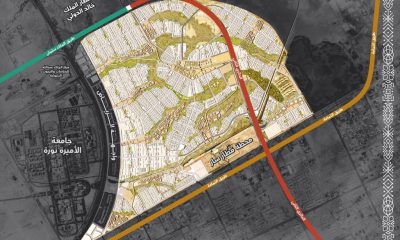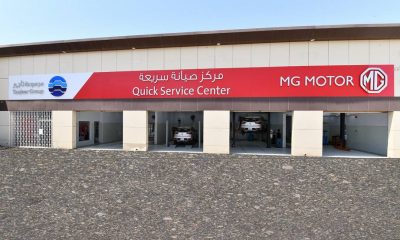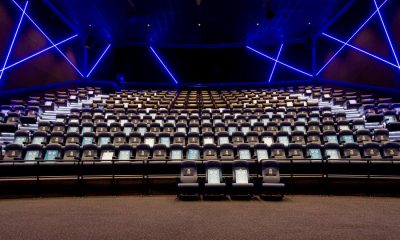أعلن العضو المنتدب والرئيس التنفيذي لمدينة الملك عبدالله الاقتصادية الأستاذ فهد الرشيد، عن تأسيس كيانٍ غير ربحي تحت مسمى “مؤسسة البحر الأحمر” يتخذ من العاصمة جنيف مقراً له، حيث ستسهم المؤسسة في إطلاق المبادرات المتنوعة الهادفة لقيادة جهود التنمية واستثمار الفرص المتاحة، إضافة إلى رفع الوعي العام بالإمكانات التي تملكها منطقة البحر الأحمر.
وأكد الرشيد، خلال مشاركته في فعاليات المنتدى الاقتصادي العالمي الذي عقد في مدينة دافوس السويسرية يوم الأربعاء الموافق 20 يناير 2016م، أن تطوير الحركة التجارية في منطقة البحر الأحمر يسهم بشكل أساسي في تحقيق التنمية المستدامة في واحدة من أكبر الأسواق الناشئة على مستوى العالم.
وستضم المؤسسة الوليدة التي ترأسها مدينة الملك عبدالله الاقتصادية، مجلساً استشارياً عالمياً يشكله صناع السياسات وقادة الأعمال والخبراء في المجالات التي تعنى بها، وسيعمل فيها فريقٌ متخصصٌ في تنفيذ الأبحاث وصياغة التوصيات بشأن السياسات ذات العلاقة.
وتمثل منطقة البحر الأحمر سوقاً اقتصادياً يضم 23 دولة تطل على ساحله أو تستخدمه كقناة تجارة أساسية بين تلك الدول؛ وهي: المملكة العربية السعودية، مصر، الإمارات العربية المتحدة، الأردن، اليمن، السودان، بوروندي، جمهورية الكونغو، جيبوتي، اريتريا، أثيوبيا، العراق، كينيا، مدغشقر، موزمبيق، رواندا، الصومال، سوريا، تنزانيا، أوغندة، الكويت، لبنان ونيجيريا.
وأوضح الرشيد أن البحر الأحمر يعد خط تجارة بحري عالمي هام ويلعب دوراً حيوياً في التبادل التجاري بين دول العالم منذ آلاف السنين، وبالرغم من ذلك فإن دول المنطقة لا تستفيد كثيراً من الثروة التي تمر من خلال خط التجارة هذا في الوقت الراهن، لكن هذا الأمر على وشك أن يتغير، مضيفاً: “هذه السوق هي الأسرع نموأ في العالم اليوم، وفي نفس الوقت هي الأقل تكاملاً بالاقتصادات الأخرى، ولهذا السبب فقد أطلقنا مبادرة مشتركة لتسهيل التجارة وتعزيز تدفق البضائع بين دول منطقة البحر الأحمر، والنهوض بمعدلات نموها وازدهارها أينما احتجنا إلى ذلك”.
وأشار الرشيد إلى أن الهدف من إنشاء مؤسسة البحر الأحمر هو الاستفادة من الإمكانات الهائلة التي تمتلكها المنطقة من خلال تعزيز البنية التحتية للخدمات اللوجستية، وتعزيز التجارة في دول البحر الأحمر، وتحفيز الاستثمارات الخارجية، مبيناً أن هذه المبادرة تجسد رابطة قوية بين القطاعين العام والخاص والمجتمعات المدنية، حيث يقوم كل طرفٍ بدوره في هذا المجال، ولهذا تم إنشاء المؤسسة لجمعهم معاً وتأسيس محركٍ جديدٍ لنمو الاقتصاد العالمي.
وتشير تقديرات الأمم المتحدة إلى أن الدول العشرين بالمنطقة التي تعتمد على البحر الأحمر كخط رئيسي للتجارة، سيرتفع عدد السكان فيها من 620 مليون إلى 1.3 مليار نسمة بحلول العام 2050م، وهو ما سيؤدي إلى تعزيز الطبقة المتوسطة بنسبة 150% لترتفع من 137 مليون إلى 343 مليون نسمة لنفس الفترة، في حين تظهر التقديرات الحالية أن هذا النمو سيكون مصحوباً بنمو في إجمالي الناتج المحلي للبحر الأحمر بمقدار 3 أضعاف من 1.8 تريليون دولار إلى 6.1 تريليون دولار بحلول نفس العام. أما الحركة التجارية، فستزداد كثافة بخمسة أضعاف خلال ذات الفترة من 881 مليار دولار إلى 4.7 تريليون دولار.
كما ستؤدي التحسينات في البنية التحتية وتعزيز التعاون في مجال التجارة، إلى رفع كفاءة التحصيل الجمركي وتقليص التكاليف بشكلٍ كبير، وبالتالي تعزيز فرص الشركات الصغيرة والمتوسطة الحجم في الاستفادة من التجارة الدولية. وهذا قد يرفع معدل نمو الناتج الإجمالي بحوالي 30% ليصبح أعلى من التقديرات الحالية ويصل إلى 6.6 تريليون دولار بحلول 2050م.

RED SEA FOUNDATION LAUNCHED TO DRIVE GROWTH IN REGIONAL TRADE
Speaking at a special event at the World Economic Forum in Davos, Mr Al Rasheed announced the formation of a non-profit policy think tank, the Red Sea Foundation, to raise awareness of the region’s potential and advocate the necessary policy initiatives to drive developmentThe Foundation, to be based in Geneva, will comprise a global advisory board of policy makers, business leaders and relevant subject matter experts. It will also include an operational staff that will research, formulate and promote policy recommendations
“The Red Sea is a critical global shipping route that has played a pivotal role in global trade for millennia, but today little of the wealth that flows though the region actually benefits the countries that border it. That is about to change,” said Mr Al Rasheed. “This is the fastest growing developing market in the world today and the least exploited
A coordinated initiative to facilitate trade will significantly improve the flow of goods within the Red Sea region and foster growth and prosperity where it is most needed.”
According to the United Nations, the population of the twenty countries that use the Red Sea as their primary shipping corridor will increase by 110 percent from 620 million today to 1.3 billion in 2050. The burgeoning middle class in the region is expected to increase by 150 percent from 137 million to 343 million in the same period
Current projections indicate that this growth will drive a threefold increase in regional GDP from $1.8 trillion today to $6.1 trillion by 2050. Trade will increase by a factor of five from $881 billion to $4.7 trillion
Approximately ten percent of global maritime trade passes through the Red Sea economic basin every year. The expansion to the Suez Canal, which will double its capacity, is expected to drive increased volumes
Limited logistics infrastructure is just one factor limiting growth. For example, few of the region’s ports can handle today’s largest container vessels. Saudi Arabia’s King Abdullah Port, which began operations in 2015, will be largest Red Sea port by 2017
More Other factors affecting growth include a wide disparity in levels of economic development and a regulatory environment that significantly increases the costs of cross border trade. World Bank data suggest that every dollar spent manufacturing a product generates $2.19 in trade costs, including logistics costs and tariffs
Improvements to infrastructure and enhanced cooperation in cross border trade could increase efficiency, reduce costs and enhance the participation of smaller and medium sized companies in the global value chain. This would improve GDP growth by almost 30 percentage points over current projections to $6.6 trillion and trade by more than 180 percentage points to $6.3 trillion by 2050
“The objective of the Red Sea Foundation is to actualize the enormous potential of this region by enhancing the logistics infrastructure, promoting trade among Red Sea region countries and encouraging foreign investment,” said Mr Al Rasheed. “This is an initiative in which the public and private sectors and civic society all have important roles to play. The Red Sea Foundation exists to bring them together to build a new growth engine for the global economy
The Red Sea Region comprises twenty countries that either lie on the Red Sea or use it as their primary shipping channel: Burundi, The Democratic Republic of Congo, Djibouti, Egypt, Eritrea, Ethiopia, Iraq, Jordan, Kenya, Madagascar, Mozambique, Rwanda, Saudi Arabia, Somalia, Sudan, Syria, Tanzania, UAE, Uganda, and Yemen


 أسواق5 سنوات ago
أسواق5 سنوات ago
 عقارات5 سنوات ago
عقارات5 سنوات ago
 سيارات5 سنوات ago
سيارات5 سنوات ago
 فن5 سنوات ago
فن5 سنوات ago
 منوعاتسنتين ago
منوعاتسنتين ago
 مطاعم4 سنوات ago
مطاعم4 سنوات ago
 عطورات3 سنوات ago
عطورات3 سنوات ago
 عطورات4 سنوات ago
عطورات4 سنوات ago




